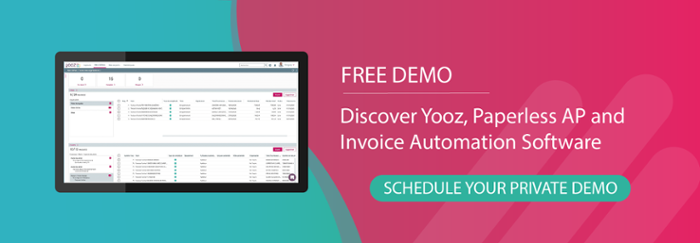In today's fiercely competitive business environment, maintaining a strong relationship with suppliers is crucial for success. This is particularly true for businesses that depend on a steady flow of goods and services being delivered in order to satisfy their customers.
After all, even if a business's products or services are advanced, supplier or performance issues such as delayed deliveries, low product quality, or subpar services can negatively impact both the business itself as well as the customers.
Therefore, efficient supplier relationship management is crucial - a key piece of the puzzle - for businesses to achieve their business goals. And, although challenges within the value or supply supply chain can cause strain on relationships, companies can still enhance their supplier performance by implementing effective supplier relationship management practices.
Let's explore further why supplier performance management matters and ways in which to both improve performance and maintain success.
Why is supplier performance management important?
As previously mentioned, efficient supplier performance management is crucial for smooth business operations, reduced risk, and overall performance. This process involves analysing the effectiveness and delivery performance of goods and services provided by vendors and plays a critical role in being able to measure supplier performance in addition to assessing overall business performance and expenditure.
With this in mind, the procurement process and indeed supply chain management as a whole, is constantly under scrutiny, particularly during times of economic pressures such as high inflation, a recession, or budget constraints. Furthermore, no matter how advanced your own services or products are, if supplier performance dips - for example, after misplacing a delivery or consistently not providing the levels of service expected - businesses and customers will be adversely impacted.
Thus, being able to mine supplier data in a timely fashion in order to provide information that can lead to more informed decisions on costs, performance, and efficiency is imperative. However, businesses must know how to improve supplier relationship management performance to sustain their competitive advantage and improve their operations and profitability.

5 Best Practices to improve supplier performance
There are several ways in which businesses can review supplier performance to get the best out of a working relationship and keep the wheels of the supply chain well-oiled and running smoothly. For example, supplier analysis could help highlight and predict other supply chain challenges so that any problems can be dealt with before they become critical. This can help avoid empty shelves, over-stocking, or other issues that relate to supplier performance or supply chain disruptions that could have a detrimental impact on business objectives, revenue, or your own customer relationships.
Reviewing supplier metrics on a consistent basis also means businesses can better compare suppliers as well as goods and services received, allowing cost-cutting decisions to be made without affecting overall business performance. For example, if unnecessary items are being ordered on a regular basis from suppliers, raw materials are unavailable, or software licenses are about to increase in price, finance leaders can prepare in advance and priorities areas which need addressing sooner rather than later.
To improve supplier performance, here are 5 best practices that businesses can adopt to further supplier improvement, help enhance their relationships with vendors, and keep their supply chains running smoothly:
1. Collect data
Information is essential so if you’re not actively collecting data, you won’t be able to make better, data-based decisions. And, because this data comes from different locations and departments, from business processes such as procurement, accounts payable, and even cybersecurity, it’s important to collate it into one system for proper analysis on a regular basis.
2. Set and measure against Key Performance Indicators (KPIs)
When measuring supplier performance, how do you know what good looks like if you haven’t outlined the targets that need to be met? Setting KPIs is important for measuring and improving supplier performance and should be outlined when cementing new supplier relationships. They should also be referred back to at regular intervals. Standard KPIs include on-time deliveries, number of delays, and time to fulfill purchase orders, but can also include others such as customer service levels, security, or environmental targets.
3. Update Service-Level Agreements (SLAs)
If the KPIs set out above aren’t being met on a consistent basis by poorly performing suppliers, it may be time to review and update service-level agreements. Mismatched expectations between actual (supplier) performance metrics and expectations can significantly impact the quality of working relationships and hinder peak performance.
To avoid such scenarios, it is important to monitor supplier performance. This helps to ensure ongoing clarity and it is recommended to update supplier service-level agreements on a regular basis. Reviewing SLAs at least once a year is a good cadence but may be necessary to do it more frequently during high growth phases or involving new markets.
4. Communication
Proper communication of the results of the supplier performance review is crucial to avoid any uncomfortable conversations and establish plans for future growth. This is true both internally to the business and externally to the vendor. While stakeholders may lack the day-to-day knowledge of the procurement or accounts payable department, they are invested in and will be interested in the benefits and efficiency of any supplier improvement strategies or decisions made. Having a transparent and honest conversation with key suppliers could help to foster long-term partnerships or remedy problematic situations.
5. Adopt better technology
Ensuring that all the data is centrally located and correct can help to streamline the process of collecting and analysing data. If this is currently not the case, then it may be time to review various aspects of your tech stack and adopt better technology or software solutions.
For example, if your procurement team is spending hours to pull supplier performance data and reports, it might be time to look into automated tools that can do it faster and with more accuracy. Plugged into the Accounts Payable (AP) process, you can also gain easy access to real-time information to inform stakeholders whenever relevant information is needed.

How can automation help?
Automation can significantly improve supplier performance management in several ways. Here are a few examples:
1. Data collection and analysis
With the help of automation tools, businesses can collect data from various sources and centralize it into one system. This not only saves time but also ensures accuracy and consistency in data analysis. By automating the data collection and analysis process, businesses can gain real-time insights into supplier and performance and take proactive measures to address any issues.
2. Setting and measuring KPIs
Automation technology can also assist in setting and measuring key performance indicators for a company’s suppliers. By integrating data from various sources and systems, business can identify critical KPIs and track supplier performance against them. This helps in identifying potential issues early on and in addressing them before they impact the supply chain.
3. Updating SLAs
By monitoring actual supplier performance against KPIs and SLAs, businesses can use technology to improve performance and provide insights that help identify areas where improvements are needed and to negotiate better terms with suppliers.
4. Communication
Automation tools can help in communication between businesses and suppliers. For example, by automating the supplier performance review process, businesses can provide real-time feedback to suppliers and collaborate on continuous improvement strategies. This helps in fostering long-term partnerships with suppliers and improving overall supply chain performance.
5. Streamlining procurement processes
Automation can help in streamlining procurement processes and business processes by eliminating manual tasks and reducing any risk of errors. For example, when it comes to supplier’s operations, by automating invoice processing and payment approvals, businesses can ensure timely payments to suppliers and avoid delays in the supply chain.
Overall, automation can help organisations on how to improve their supplier performance management by providing real-time insights into supplier performance, streamlining procurement processes, minimizing risk, and fostering better communication and collaboration with suppliers.

Improve supplier performance
Learning how to improve supplier performance management can make a huge difference in your own business performance. Whether it's paper and software or food and apparel, a lot of businesses rely on a constant, steady delivery of goods and services. Customer satisfaction is the number one priority for both sides, but as disruption of any size can spell disaster, it’s important to regularly check on current supplier performance levels and if they are the right fit for your business.
From a business perspective, keeping vendors and suppliers happy often comes down to making sure payments are made on time, as well as for the right amount and without complications. For example, vendors might be smaller suppliers which don’t have the cash reserves of large enterprises and therefore need paying as soon as possible in order to improve cashflow. Although most of the issues related to processing payments comes down to human error and the reliance on manual practices or inefficient processes, automated accounts payable is able to remove this risk while ensuring timely and accurate supplier payments.








